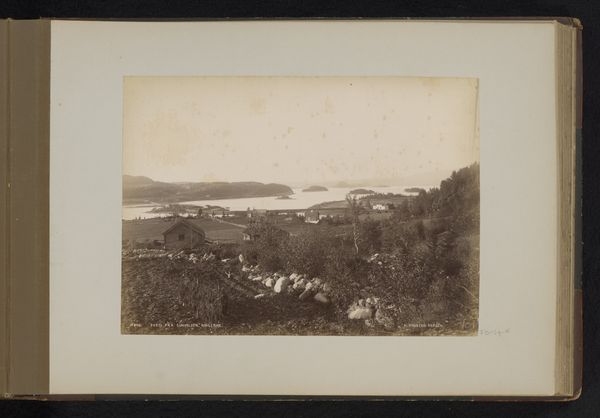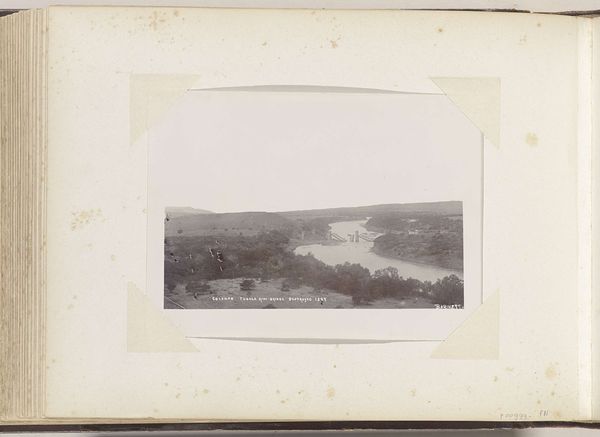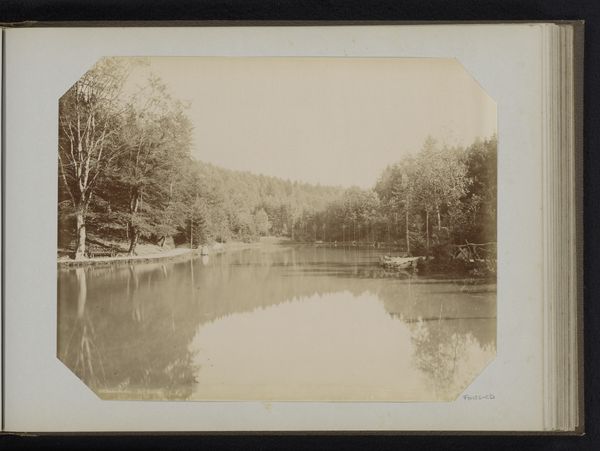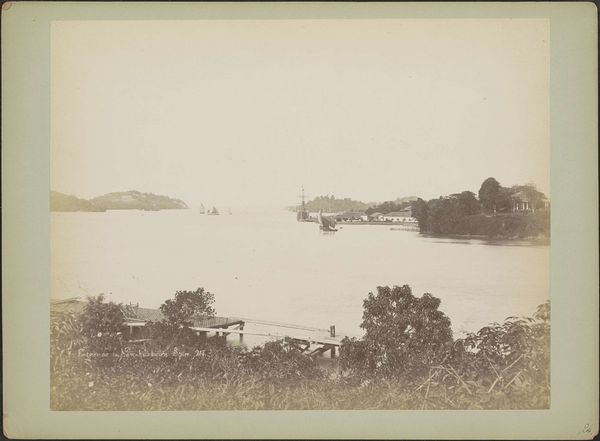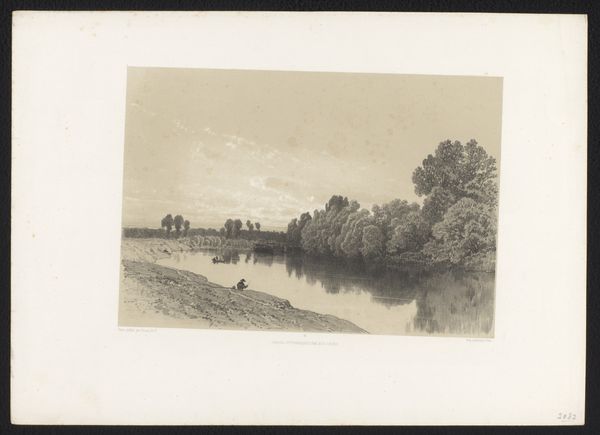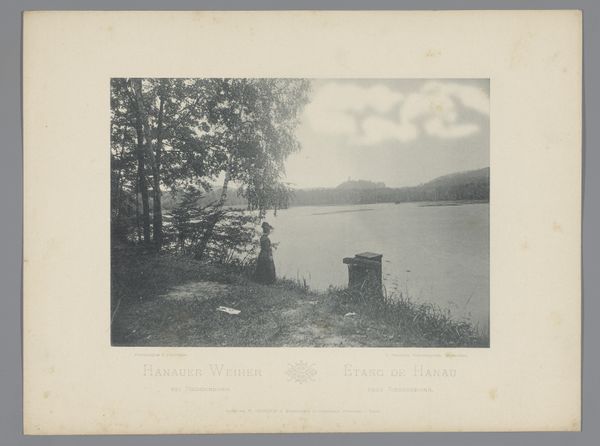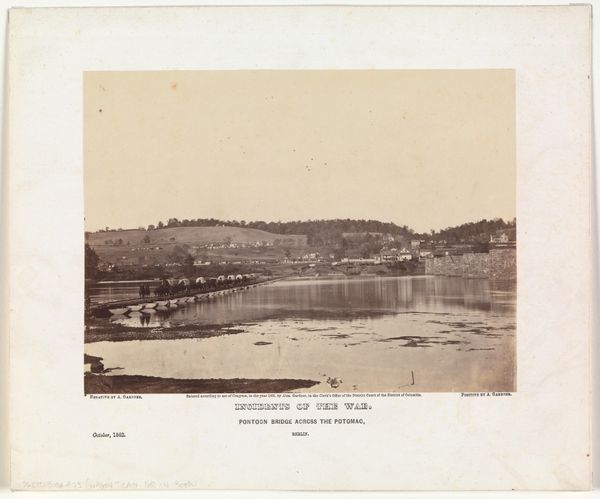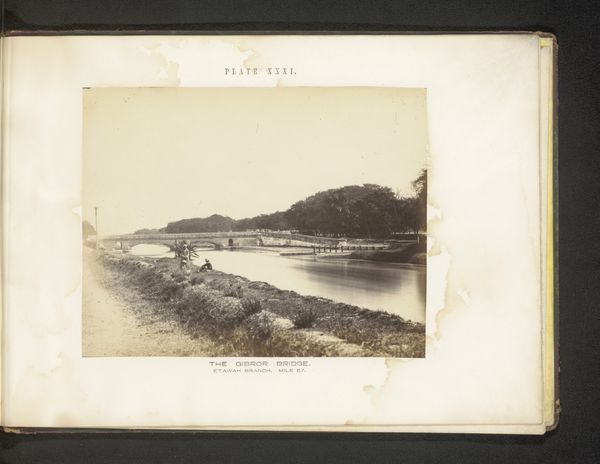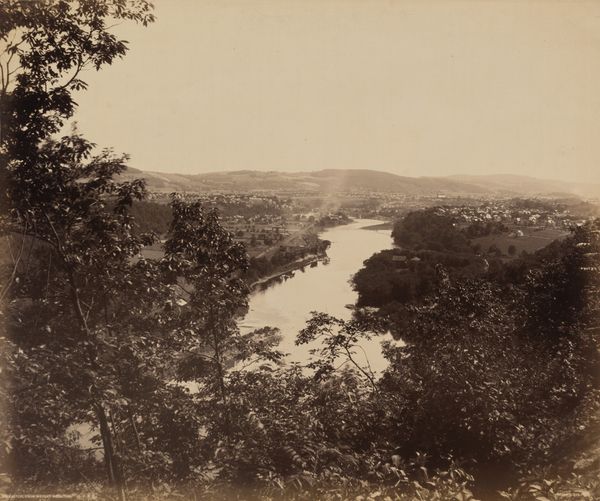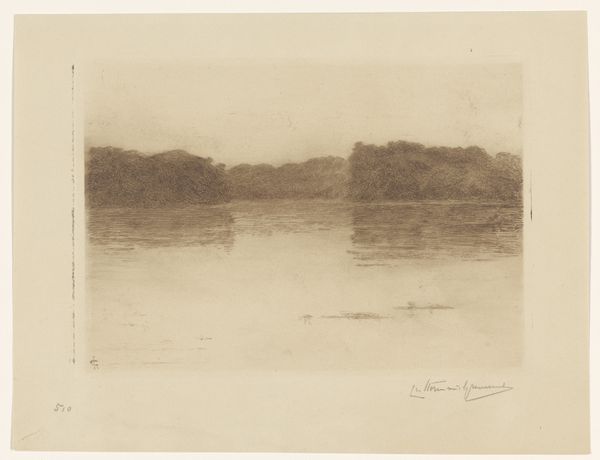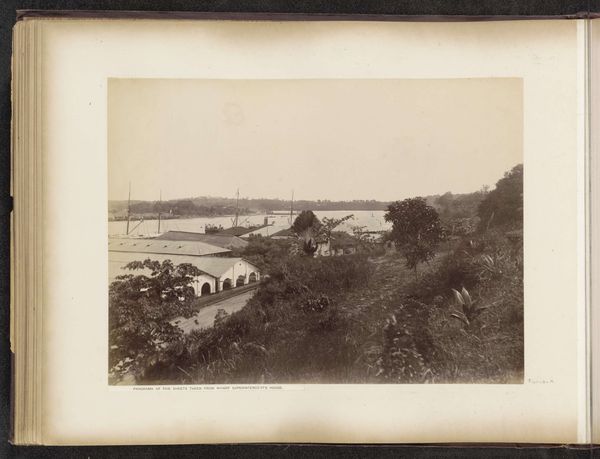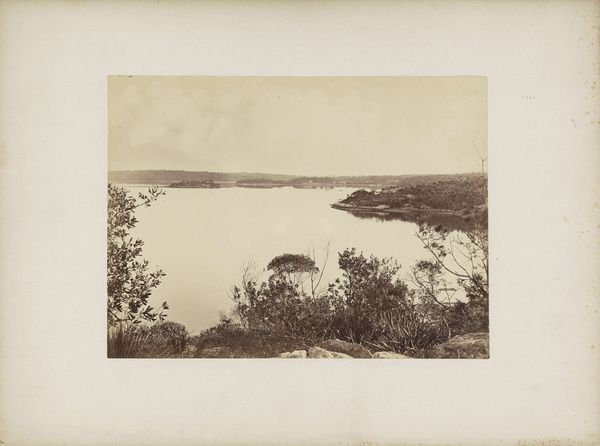
photography, gelatin-silver-print
#
lake
#
landscape
#
photography
#
orientalism
#
gelatin-silver-print
Dimensions: height 265 mm, width 355 mm
Copyright: Rijks Museum: Open Domain
Curator: This gelatin silver print, captured circa 1890-1900 by Heinrich Ernst & Co., presents "Gezicht op een meer bij Olehteh-Atschin, Sumatra"—a view of a lake near Olehteh-Atschin in Sumatra. Editor: There's such stillness here, a melancholic hush. The tonal range is so narrow it almost flattens the depth. Curator: Observe how the composition utilizes the framing of the foliage. It's a classic picturesque device that guides the viewer's eye to the serene vista. The artist plays with textures masterfully; note the contrast between the dense foreground and the smooth expanse of water. Editor: While appreciating the composition, it’s hard not to think about this landscape existing under colonial influence. Orientalism in photography often aestheticized non-Western spaces to make them appear idyllic and passive, reinforcing unequal power dynamics. How much did the presence of foreign businesses impact the natural settings represented in the photograph? Curator: One can interpret the soft focus as an attempt to idealize the landscape, or merely as an aesthetic choice fitting the style of landscape photography from this period. Consider how light itself models the terrain, emphasizing a depth which serves not only descriptive but also structuring purposes within the image. Editor: And beyond mere documentation, this imagery likely bolstered narratives around exploration and resource extraction. Images like this created visual appetite for what colonial projects aimed to possess, transforming landscapes into resources waiting to be seized and commodified. The “stillness” feels heavy, saturated with political intentions and historical oversights. Curator: A crucial question emerges: what does the consistent tonality itself suggest in the reading of photographic language? By suppressing dramatic value contrast, the work might seek balance... and what visual function could balance seek? Editor: These photographs contributed to specific colonial ideologies about landscape and place. Recognizing the interplay between representation and power is paramount. How can photography challenge that tradition to present more responsible narratives about geographical encounters, one that refuses colonial violence? Curator: An important closing remark to appreciate how this artwork speaks through visual language. Editor: Yes, understanding and actively addressing its historic roots.
Comments
No comments
Be the first to comment and join the conversation on the ultimate creative platform.
